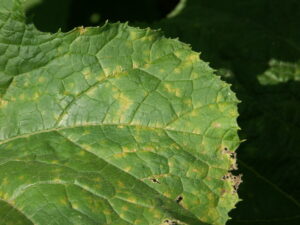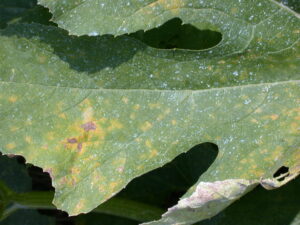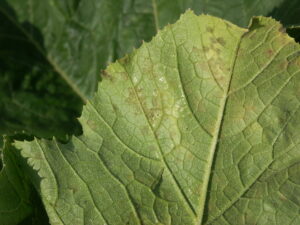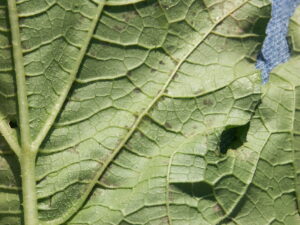Downy mildew of cucumbers has been observed in Knox County. This disease has not been observed on pumpkins, but it is possible for downy mildew to spread from cucumbers to pumpkins. Therefore, pumpkin growers should scout for downy mildew and manage for the disease depending on their situation. Pumpkin growers who plan to harvest mid September, should apply fungicides through August. This probably means only 1 or 2 more applications. Since downy mildew does not affect fruit, it is not necessary to apply fungicides until harvest. If growers expect fruit to mature until mid October, then it makes sense to manage for downy mildew through September. More detail on what fungicides to apply can be found in the last issue of the Vegetable Crops Hotline or in the Midwest Vegetable Production guide mwveguide.org.
The first symptoms that growers are likely to notice on pumpkin leaves are mustard yellow lesions that often appear in angular spots (Figure 1 and 2). On the underside of the leaf, dark spores may be observed in moist conditions such as when dew is present (Figure 3 and 4).
However, the symptom of the yellow leaf itself does not mean downy mildew is present. There are multiple factors that may cause yellow leaves, please read the other article in this issue Yellow Leaves on Pumpkin.



